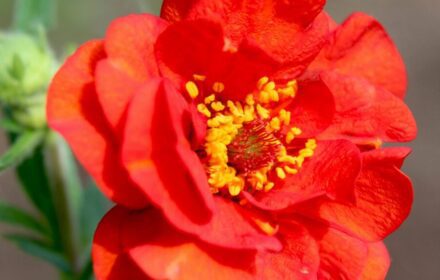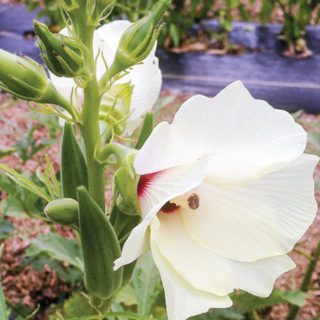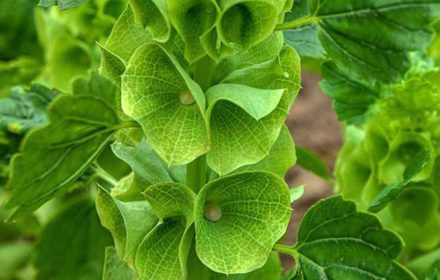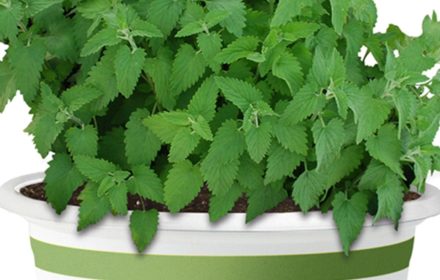How to Grow British Red Ball Chicory from Seeds
British Red Ball Chicory is a striking variety known for its tightly packed, crisp red and cream leaves forming a compact, flavourful head. This versatile biennial is used in a range of dishes, from raw salads to cooked recipes, where the leaves are often boiled to reduce their natural bitterness. Growing up to 90-150 cm (3-5 feet) tall, Red Ball Chicory is well-suited for growing in vegetable patches, pots, or containers. With sequential sowing, you can enjoy a continuous harvest throughout the growing season. Follow this guide to successfully sow and grow British Red Ball Chicory in your UK garden.
When and Where to Sow British Red Ball Chicory Seeds
- Indoor Sowing: Start sowing seeds indoors from February to April. This allows the plants to establish before being transplanted outdoors. Chicory requires a cool start, so growing under cover, such as in a greenhouse or on a windowsill, is ideal.
- Outdoor Sowing: Direct sow outdoors from late spring to early summer, once the soil has warmed up and there is no risk of frost (typically from May onwards). Chicory thrives in cool weather and can tolerate light frosts, making it suitable for both spring and autumn crops.
Preparing the Soil for Chicory Plants
- Soil Requirements: Chicory prefers well-drained, fertile soil with a pH between 6.0 and 7.5. Enrich the soil by adding compost or well-rotted manure before planting. This will support healthy root and leaf development.
- Location: Choose a sunny or partially shaded spot for planting. While chicory tolerates light shade, full sun will promote better colour and flavour in the leaves.
- Temperature: Ideal germination occurs between 15-20°C (59-68°F). Protect young seedlings from extreme cold and heat, which can hinder germination and growth.
How to Sow British Red Ball Chicory Seeds Indoors
- Sowing Depth and Containers: Fill seed trays or small pots with seed compost. Sow seeds 1.5 cm (15 mm) deep, placing 2-3 seeds per pot. Cover lightly with soil and firm down gently.
- Germination Conditions: Place the trays in a bright, warm area such as a windowsill or greenhouse. Maintain a temperature of 15-20°C. Keep the soil consistently moist but not waterlogged. Germination typically occurs within 10-14 days.
- Transplanting: Once seedlings are 3-5 cm tall and have developed a few true leaves, thin them out to one plant per pot. When they reach about 7-10 cm in height, they are ready to be transplanted outdoors, provided there is no risk of frost.
- Hardening Off: Gradually acclimatise seedlings to outdoor conditions by placing them outside during the day and bringing them in at night for 7-10 days before planting out.
How to Sow British Red Ball Chicory Seeds Outdoors
- Sowing in Rows: Prepare the soil by removing any weeds and raking to a fine tilth. Sow seeds directly in shallow drills, 1.5 cm (15 mm) deep, with rows spaced 30 cm (12 inches) apart. Place 2 seeds per station, approximately 20 cm (8 inches) apart within each row.
- Covering and Watering: Lightly cover the seeds with soil and water gently to settle. Keep the soil moist during the germination period. Avoid waterlogging, as chicory seedlings are sensitive to overly wet conditions.
- Thinning: Once seedlings have emerged and are large enough to handle, thin them to one plant per station. Thinned seedlings can be transplanted elsewhere or added to salads as baby greens.
Caring for British Red Ball Chicory Plants
- Watering: Keep the soil evenly moist, especially during dry spells. Chicory prefers consistent moisture but not waterlogged conditions. Water at the base of the plant to avoid wetting the leaves, which can lead to rot.
- Feeding: Apply a balanced fertiliser every 4-6 weeks during the growing season to support healthy growth. Avoid high-nitrogen feeds, as they can promote excessive leaf growth at the expense of flavour and texture.
- Mulching: Mulch around the base of the plants to retain moisture, suppress weeds, and regulate soil temperature. This is particularly beneficial during hot summer months.
- Preventing Bolting: Chicory is prone to bolting (going to seed) in hot or dry conditions. To prevent this, maintain consistent watering and provide some shade during the hottest part of the day.
Harvesting and Using British Red Ball Chicory
- Harvest Time: Chicory can be harvested once the plants are over 90 days old or when they reach a height of 12 cm or more. For the best flavour and texture, harvest when the heads are firm and the leaves have a deep red colour.
- How to Harvest: Use a sharp knife to cut the chicory heads at the base, just above the soil line. Leave the stump intact to encourage new growth, which will provide a second, smaller crop later in the season.
- Continuous Harvest: To ensure a steady supply, sow seeds every 2-3 weeks during the growing season. This method allows for a continuous harvest and prevents all plants from maturing at the same time.
- Storing: Freshly harvested chicory can be stored in the refrigerator for up to a week. Wrap the leaves loosely in a damp cloth or paper towel to maintain their crispness.
Common Issues and Tips for Growing Chicory
- Pest Control: Watch out for slugs and snails, which can damage young seedlings. Use organic slug pellets or copper tape around pots and containers to deter these pests.
- Bolting Prevention: If your chicory is bolting, it may be due to hot weather or inconsistent watering. Provide shade during hot spells and water regularly to prevent stress and early flowering.
- Improving Flavour: For a milder flavour, blanch the chicory heads by covering them with a flowerpot or excluding light for the last 1-2 weeks before harvest. This reduces bitterness and results in more tender leaves.
Common Questions About Growing British Red Ball Chicory
- Can I grow chicory in containers? Yes, chicory grows well in containers. Choose a pot at least 30 cm deep with good drainage. Use a high-quality potting mix and water regularly to keep the soil evenly moist.
- Why are my chicory leaves bitter? Chicory has a naturally bitter flavour, which can be reduced by blanching or harvesting the leaves when they are young and tender. Cooking the leaves or mixing them with sweeter greens in salads can also balance the bitterness.
- How do I prevent bolting in chicory? Bolting is often caused by hot weather or stress. Maintain consistent soil moisture, provide shade during hot periods, and sow in cooler parts of the year to minimise the risk of bolting.
By following these guidelines, you can enjoy a successful harvest of British Red Ball Chicory in your garden. Whether used in salads, cooked dishes, or as a decorative plant, this versatile variety offers both beauty and flavour for UK gardeners.


















